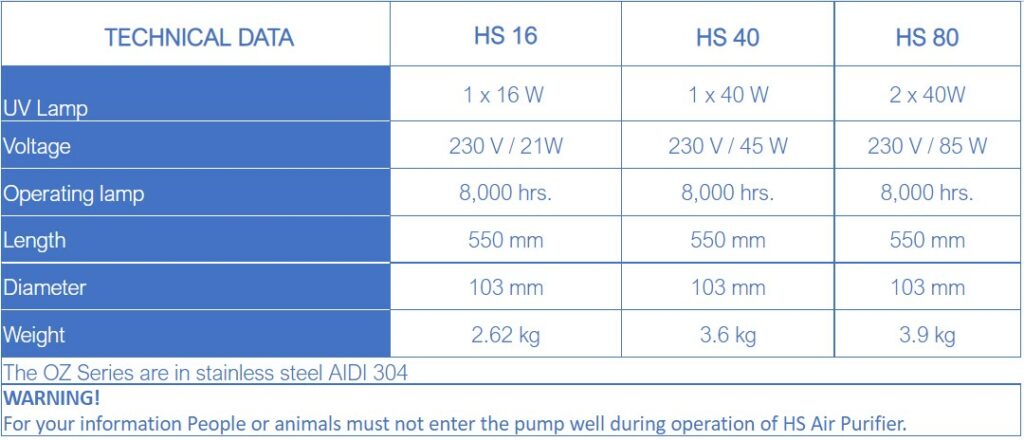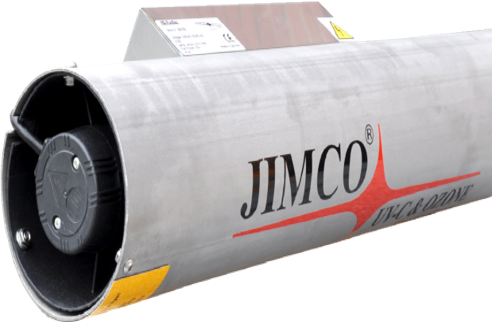
Reduction hydrogen sulfide (H2S) up to 90%
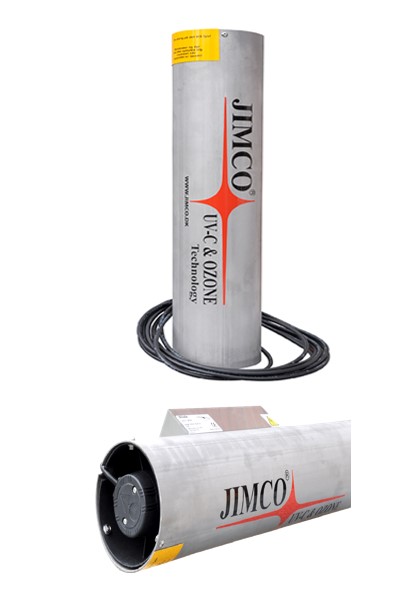
HS Purifier for industrial pump well air cleaning uses photolytical oxidation to remove the gas, hydrogen sulfide (H2S) from the air from .
When the H2S level reduces significant, you will protect the electronic from the cabinet by the pump well. If the pump well is located close to a neighbor, then you also avoid neighbor complaints, because the odor is reduced significant.
The HS Purifier is easy to install in any pump well, and like the rest of the JIMCO products, HS Purifier is running as an environmentally friendly professional air purification solution.
JIMCO’s environmentally friendly technology takes basic in photolytical oxidation, and the technology can be used to purify both air and water without any use of chemicals or filters in the industrial businesses. Read more about UV-C and Ozone here
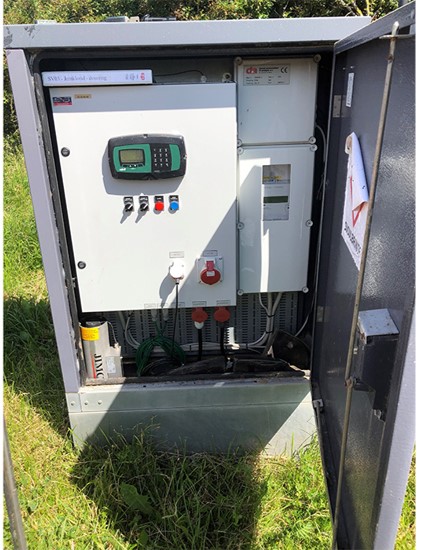
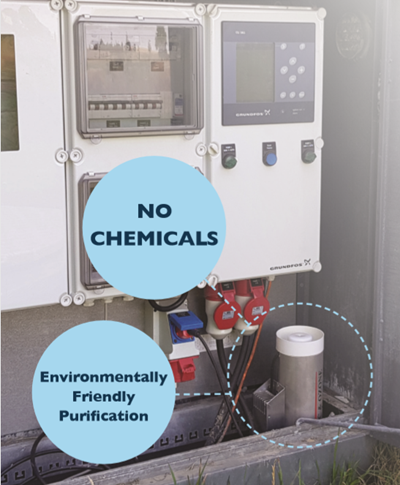
The HS Purifier will be installed in a pipe in the cabinet that ends in the pump well and is connected to 230 V power supply.
Oxygen from the atmospheric air will by of JIMCO´s special UV-C lamps, turn into ozone as it is blown down in the pump well by a ventilator. The ozone reacts with the hydrogen sulfide and the following chemical reaction occurs:
O₃ + H₂S -> SO₂ + H₂O -> SO₂²⁻ OG SO₃²⁻
This means that the hydrogen sulfide is oxidized into a sulfur compound and is therefore no longer dangerous or malodorous
The HS Purifier is connected to a 230 V power supply and is mounted vertical in an Ø110 PVC tube with the ventilator on top.
The Ø110 tube ends in the pump well and the ozone will go through the tube into the pump pit.
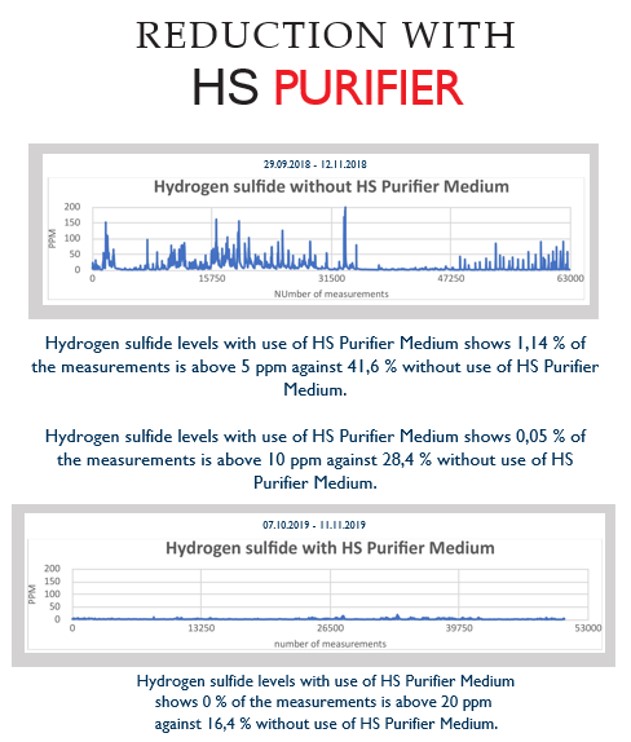
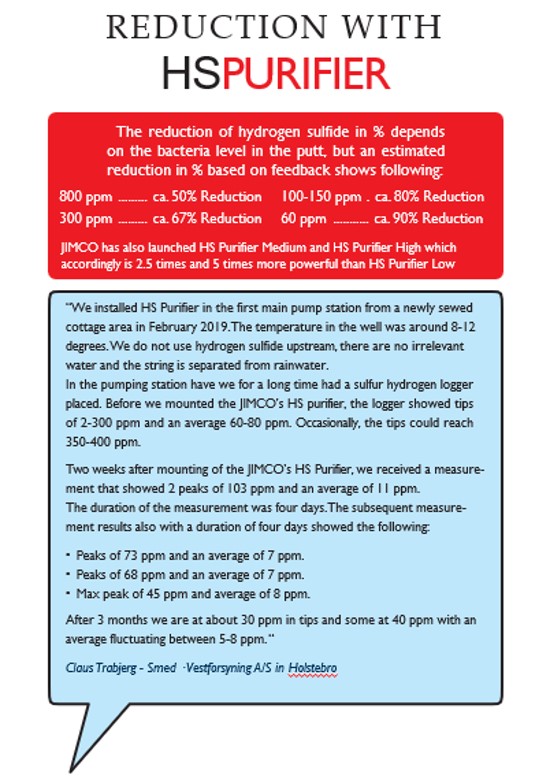
The reduction of hydrogen sulfide in % depends on the bacteria level in the putt, but an estimated reduction in % based on feedback shows following:
800 ppm – approx. 50% Reduction
300 ppm – approx. 67% Reduction
100-150 ppm – approx. 80% Reduction
60 ppm – approx. 90% Reduction
Hydrogen sulfide is an inorganic chemical compound with the formula H2S. Hydrogen sulfide is very poisonous, corrosive, and flammable and a mixture of H2S and air can be explosive.
Less than 0,01-0,02 ppm can the sense of odor start to reveal hydrogen sulfide
The acute toxicity of hydrogen sulfide is due to local attacks on tissues, primarily eyes and lungs, and an inhibition of blood’s ability to transport oxygen. Hydrogen sulfide is also a flammable gas which, when mixed with air, is explosive at concentrations between 4 and 46% by volume.
The use of activated carbon in the wastewater industry is generally known but challenged by the fact that the active carbon does not always work efficiently or last long.
In the case of special pollution, it can be relevant to choose a special impregnated carbon type. This is also the case for purification of hydrogen sulfide in wastewater. With the right type of carbon for hydrogen sulfide, can up to 50% of the weight of the carbon be absorbed. With an unsuitable carbon type, the carbon may only absorb 5-10%.
JIMCO’s HS Purifier can be combined with an active carbon filter in the cabinet. One cabinet can be dug underground and the other can be placed over ground.
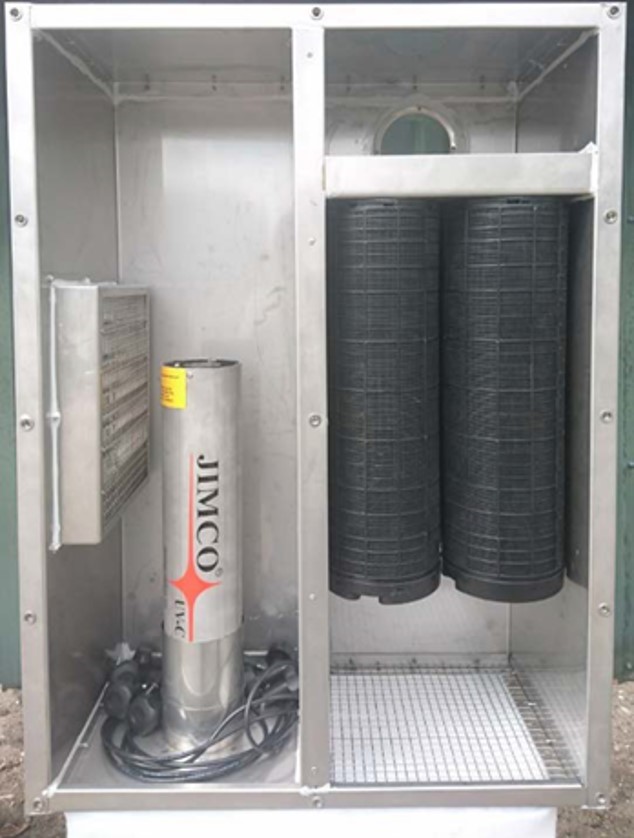
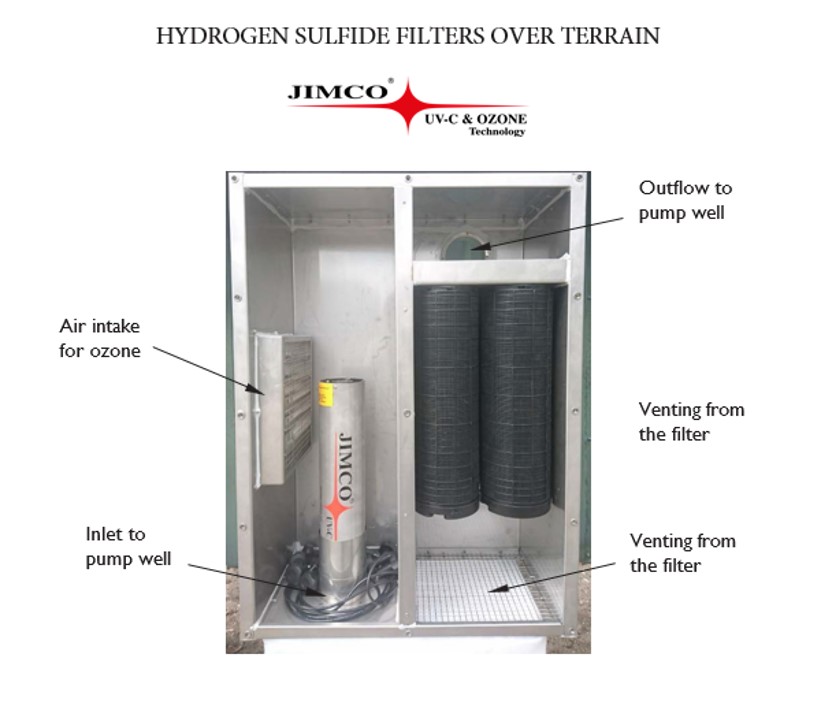
In the hydrogen sulfide filter underground, the HS Purifier is placed so the UV-C produced ozone gets access to the pump well and is supplied to the well using the HS Purifier’s ventilator.
The ozone reacts with the hydrogen sulfide, and the air leaves the well, and then the air passes through the active carbon, which is placed in the filter house as granules. The carbon absorbs and binds the remaining hydrogen sulfide and ensures an optimal solution for reducing odor and pollution to the surroundings.
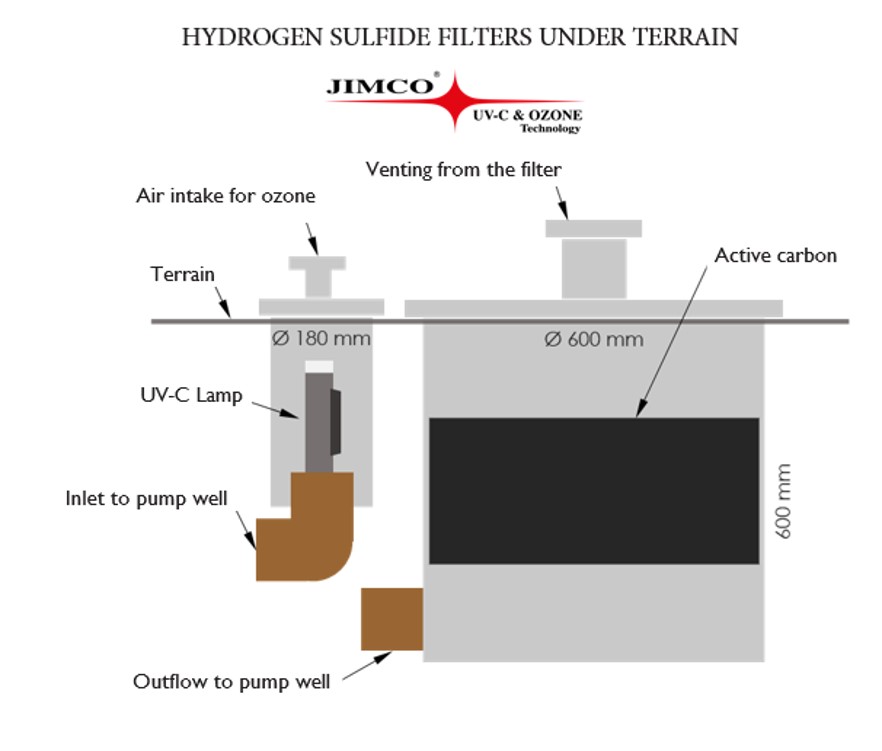
In the hydrogen sulfide filter over ground, the HS Purifier is placed so the UV-C produced ozone gets access to the pump well and is supplied to the well using the HS Purifier’s ventilator.
The ozone reacts with the hydrogen sulfide, and the air leaves the well. Then the air passes through the active carbon, in the carbon cartridges in the filter house. The carbon absorbs and binds the remaining hydrogen sulfide and ensures an optimal solution for reducing odor and pollution to the surroundings.
